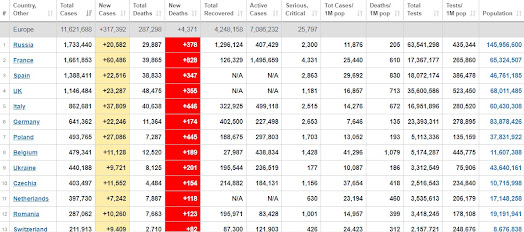Keep Smiling and helping others to make your life meaningful..an interesting story
एक औरत बहुत महँगे कपड़े में अपने मनोचिकित्सक के पास गई और बोली
"डॉ साहब ! मुझे लगता है कि मेरा पूरा जीवन बेकार है, उसका कोई अर्थ नहीं है। क्या आप मेरी खुशियाँ ढूँढने में मदद करेंगें?"
मनोचिकित्सक ने एक बूढ़ी औरत को बुलाया जो वहाँ साफ़-सफाई का काम करती थी और उस अमीर औरत से बोला - "मैं इस बूढी औरत से तुम्हें यह बताने के लिए कहूँगा कि कैसे उसने अपने जीवन में खुशियाँ ढूँढी। मैं चाहता हूँ कि आप उसे ध्यान से सुनें।"
तब उस बूढ़ी औरत ने अपना झाड़ू नीचे रखा, कुर्सी पर बैठ गई और बताने लगी - "मेरे पति की मलेरिया से मृत्यु हो गई और उसके 3 महीने बाद ही मेरे बेटे की भी सड़क हादसे में मौत हो गई। मेरे पास कोई नहीं था। मेरे जीवन में कुछ नहीं बचा था। मैं सो नहीं पाती थी, खा नहीं पाती थी, मैंने मुस्कुराना बंद कर दिया था।"
मैं स्वयं के जीवन को समाप्त करने की तरकीबें सोचने लगी थी। तब एक दिन,एक छोटा बिल्ली का बच्चा मेरे पीछे लग गया जब मैं काम से घर आ रही थी। बाहर बहुत ठंड थी इसलिए मैंने उस बच्चे को अंदर आने दिया। उस बिल्ली के बच्चे के लिए थोड़े से दूध का इंतजाम किया और वह सारी प्लेट सफाचट कर गया। फिर वह मेरे पैरों से लिपट गया और चाटने लगा।"
"उस दिन बहुत महीनों बाद मैं मुस्कुराई। तब मैंने सोचा यदि इस बिल्ली के बच्चे की सहायता करने से मुझे ख़ुशी मिल सकती है,तो हो सकता है कि दूसरों के लिए कुछ करके मुझे और भी ख़ुशी मिले। इसलिए अगले दिन मैं अपने पड़ोसी, जो कि बीमार था,के लिए कुछ बिस्किट्स बना कर ले गई।"
"हर दिन मैं कुछ नया और कुछ ऐसा करती थी जिससे दूसरों को ख़ुशी मिले और उन्हें खुश देख कर मुझे ख़ुशी मिलती थी।"
"आज,मैंने खुशियाँ ढूँढी हैं, दूसरों को ख़ुशी देकर।"
यह सुन कर वह अमीर औरत रोने लगी। उसके पास वह सब था जो वह पैसे से खरीद सकती थी।
लेकिन उसने वह चीज खो दी थी जो पैसे से नहीं खरीदी जा सकती।
मित्रों! हमारा जीवन इस बात पर निर्भर नहीं करता कि हम कितने खुश हैं अपितु इस बात पर निर्भर करता है कि हमारी वजह से कितने लोग खुश हैं।
तो आईये आज शुभारम्भ करें इस संकल्प के साथ कि आज हम भी किसी न किसी की खुशी का कारण बनें।
मुस्कुराइए
अगर आप एक अध्यापक हैं और जब आप मुस्कुराते हुए कक्षा में प्रवेश करेंगे तो देखिये सारे बच्चों के चेहरों पर मुस्कान छा जाएगी।
मुस्कुराइए
अगर आप डॉक्टर हैं और मुस्कराते हुए मरीज का इलाज करेंगे तो मरीज का आत्मविश्वास दोगुना हो जायेगा।
मुस्कुराइए
अगर आप एक ग्रहणी है तो मुस्कुराते हुए घर का हर काम किजिये फिर देखना पूरे परिवार में खुशियों का माहौल बन जायेगा।
मुस्कुराइए
अगर आप घर के मुखिया है तो मुस्कुराते हुए शाम को घर में घुसेंगे तो देखना पूरे परिवार में खुशियों का माहौल बन जायेगा।
मुस्कुराइए
अगर आप एक बिजनेसमैन हैं और आप खुश होकर कंपनी में घुसते हैं तो देखिये सारे कर्मचारियों के मन का प्रेशर कम हो जायेगा और माहौल खुशनुमा हो जायेगा।
मुस्कुराइए
अगर आप दुकानदार हैं और मुस्कुराकर अपने ग्राहक का सम्मान करेंगे तो ग्राहक खुश होकर आपकी दुकान से ही सामान लेगा।
मुस्कुराइए
कभी सड़क पर चलते हुए अनजान आदमी को देखकर मुस्कुराएं, देखिये उसके चेहरे पर भी मुस्कान आ जाएगी।
मुस्कुराइए
क्यूंकि मुस्कराहट के पैसे नहीं लगते ये तो ख़ुशी और संपन्नता की पहचान है।
मुस्कुराइए
क्यूंकि आपकी मुस्कराहट कई चेहरों पर मुस्कान लाएगी।
मुस्कुराइए
क्यूंकि ये जीवन आपको दोबारा नहीं मिलेगा।
मुस्कुराइए
क्योंकि क्रोध में दिया गया आशीर्वाद भी बुरा लगता है और मुस्कुराकर कहे गए बुरे शब्द भी अच्छे लगते हैं।
मुस्कुराइए
क्योंकि दुनिया का हर आदमी खिले फूलों और खिले चेहरों को पसंद करता है।
मुस्कुराइए
क्योंकि आपकी हँसी किसी की ख़ुशी का कारण बन सकती है।
मुस्कुराइए
क्योंकि परिवार में रिश्ते तभी तक कायम रह पाते हैं जब तक हम एक दूसरे को देख कर मुस्कुराते रहते है
और सबसे बड़ी बात
मुस्कुराइए
📷 क्योंकि यह मनुष्य होने की पहचान है। एक पशु कभी भी मुस्कुरा नही सकता।
इसलिए स्वयं भी मुस्कुराए और औराें के चहरे पर भी मुस्कुराहट लाएं.
मुस्कुराइए क्योंकि यही जीवन है🙏

















